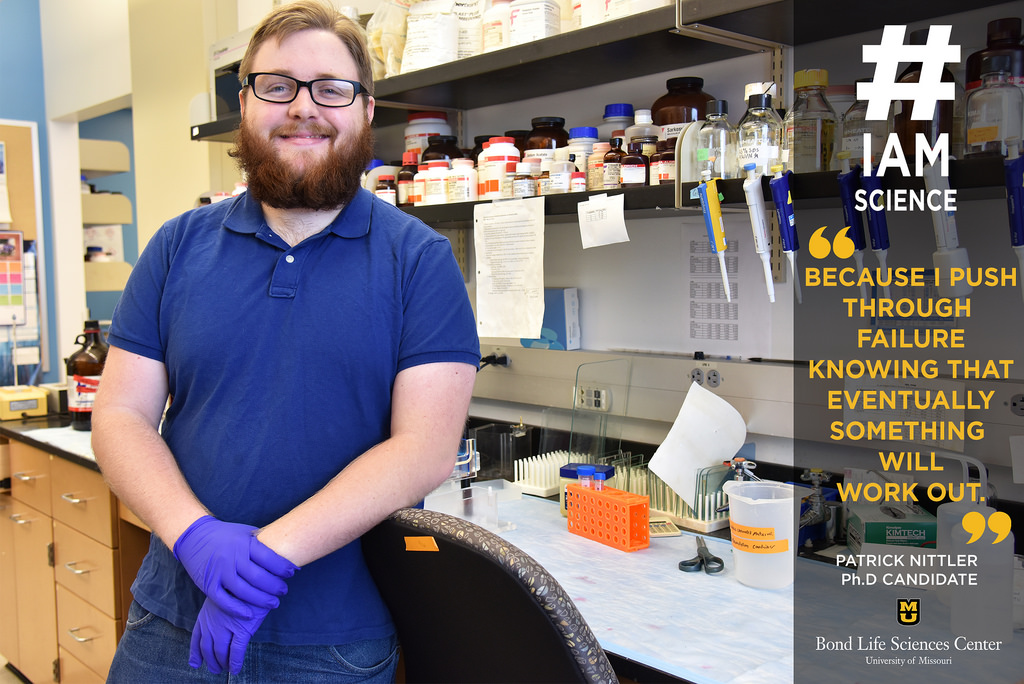Published on

Patrick Nittler, a Ph.D candidate in molecular plant biology at MU, stands near his lab station in the Liscum Lab in Bond LSC. | photo by Allison Scott, Bond LSC
“#IAmScience because I push through failures knowing that eventually something will work out.”
Breaking things apart and putting them back together has been engrained in Patrick Nittler’s life for as long as he can remember. Growing up, Nittler served as his dad’s sidekick as he salvaged parts of a broken computer to boost performance in their new one. Moments like those were bonding experiences that encouraged the innate curiosity of the now second year molecular plant biology Ph.D. candidate.
Although plants and your run of the mill computer have little in common, Nittler was inspired to follow his interest in how things work.
“I’m a curious person in general, so once I started working with plants I realized it’s something I’m really interested in,” Nittler said.
As part of Mannie Liscum’s lab in the Bond Life Sciences Center, Nittler works on a protein called Nonphototropic Hypocotyl 3 (NPH3) that belongs to a 33-gene member family. This protein is part of the complicated way plants respond to light and the signals that make them grow toward or away from sunlight.
“Right after the photoreceptor in Arabidopsis thaliana receives blue light, it cues a domino effect,” Nittler said. “The protein I study is the next step, and I’m working on characterizing its structure.”
Doing so could help Nittler and his lab to learn more about the rest of the gene family. It could also contribute to his main area of expertise: phototropism, which is how plants perceive and respond to light sources. This can increase the efficiency of photosynthesis by orienting the leaves of the plant toward sunlight.
“They all seemingly do different things, so I’m trying to figure out what influences phototropism,” Nittler said. “We only know what happens after mutating six of the 33, so we’re working to better understand them. Some of them might not have functions, though.”
Nittler, however, directs his attention to just part of the family.
“I work with the three most closely related,” Nittler said. “One of those has a known function and the other two don’t.”
Meaning that two of the three are recognized as genes, but what happens when you mutate them is uncertain. While figuring out what mutations cause is important, Nittler has his attention elsewhere.
In order to better understand the genes, Nittler is attempting to learn the 3D structures of the protein’s middle section.
“We’ve had issues experimentally getting it to work,” Nittler said. “The main thing I want to find out from the 3D structure is why Nonphototropic Hypocotyl 3 is involved in phototropism while its close gene family members aren’t.”
Even though it hasn’t worked out just yet, Nittler continues to try new things in hopes of finding the solution.
“I like the challenge,” Nittler said. “Science doesn’t work a lot of the time, but when it does it’s really exciting.”